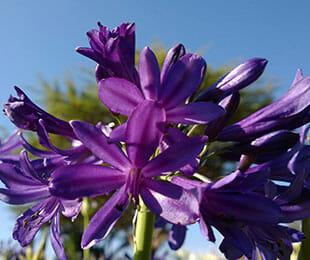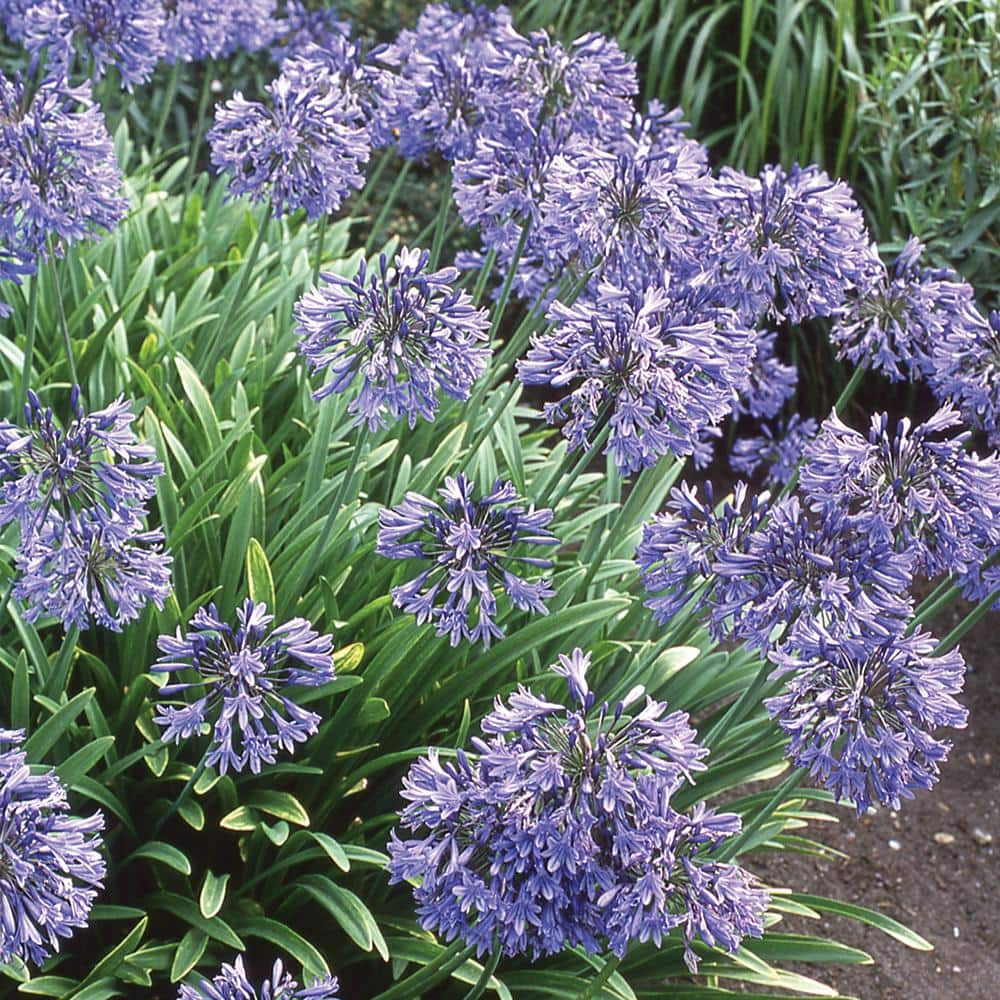Agapanthus Varieties: Selecting the very best for Your Landscape
Agapanthus Varieties: Selecting the very best for Your Landscape
Blog Article
Mastering the Art of Agapanthus Care: Essential Steps for Healthy And Balanced Development and Vivid Blossoms
In the world of cultivation, the farming of agapanthus stands as a fulfilling venture for those who seek to nurture these stylish flowering plants. From picking the best selection to grasping trimming techniques, the journey towards growing flourishing agapanthus plants is complex and holds the vital to unlocking the full potential of these botanical treasures.

Picking the Right Agapanthus Range

When choosing the ideal Agapanthus variety for your garden, consider elements such as environment viability, bloom color, and growth practice. Furthermore, consider the climate in your area to make certain the Agapanthus range you choose can prosper in your specific problems. Comprehending the development habit of different Agapanthus varieties is critical for appropriate positioning within your garden.
Perfect Planting Problems
Taking into consideration the ideal environmental needs is vital for effective Agapanthus farming. Agapanthus plants are sensitive to cool temperatures and ought to be shielded from frost throughout winter season months.
To make certain healthy and balanced growth and dynamic flowers, plant Agapanthus light bulbs at a depth of about 2-4 inches and area them 8-12 inches apart. Adding raw material, such as compost, to the soil can enhance drain and fertility, promoting robust root growth. Mulching around the base of the plants aids keep moisture and reduces weed growth. Normal watering is critical, specifically during the growing period, to maintain the dirt regularly moist yet not soaked.
Watering and Feeding Tips
Preserving correct dampness degrees and giving essential nutrients are essential elements in the care regimen for Agapanthus plants. When it comes to sprinkling Agapanthus, it is important to strike an equilibrium. These plants choose continually moist dirt however are susceptible to root rot if overwatered.
Feeding Agapanthus is necessary for advertising healthy growth and prolific blooms. Apply a balanced plant food, such as a 10-10-10 formula, in the early spring as new growth emerges. Repeat this application every 6-8 weeks throughout the expanding period. Stay clear of too much fertilization, as it can result in rich vegetation at the expenditure of flowers. Constantly adhere to the manufacturer's instructions for proper dilution and application approaches. By following these watering and fertilizing pointers, you can ensure your Agapanthus weblink plants grow and create dynamic, lasting flowers.
Trimming Methods for Agapanthus
Pruning Agapanthus plants at the proper times and with appropriate methods is important for preserving their wellness and advertising optimal growth and blooming. The perfect time to trim Agapanthus is in late winter or early springtime before new development arises.
Deadheading spent blossoms can additionally reroute the plant's power into creating more blossoms instead than setting seeds. If you want to collect seeds for you could try this out breeding, leave some blossoms to completely dry and fully grown on the plant.
Bear in mind to make use of clean, sharp devices to make accurate cuts and reduce the risk of introducing conditions. Agapanthus. Routine pruning will certainly assist keep your Agapanthus looking healthy and balanced and neat while guaranteeing a plentiful screen of lovely blossoms
Handling Common Insects and Illness
After ensuring appropriate trimming methods for Agapanthus, it is vital to deal with usual insects and diseases that can impact the wellness and vigor of these plants. Agapanthus plants are generally hardy however can still succumb to particular issues. One typical parasite that affects Agapanthus is the Agapanthus gall midget. This tiny, orange fly lays its eggs in the foliage, bring about distorted growth and blossom buds that fail to open up. To combat this pest, prune and destroy any kind of afflicted plant parts and take into consideration making use of insecticidal soap.
In addition, Agapanthus plants can suffer from root rot if they are grown in poorly draining dirt. By being cautious and taking prompt action versus bugs and diseases, you can assist your Agapanthus plants prosper and generate vivid blooms. Agapanthus.

Verdict
Finally, understanding the art of agapanthus care includes choosing the ideal variety, providing perfect growing conditions, appropriate watering and feeding, proper trimming techniques, and resolving common pests and diseases. By adhering to these vital actions, you can make certain healthy development and vivid blossoms for your agapanthus plants. Keep in mind to consistently monitor and preserve your plants to promote their overall health and long life.
To make sure healthy this post growth and vivid blooms, plant Agapanthus light bulbs at a depth of concerning 2-4 inches and area them 8-12 inches apart. By following these watering and feeding suggestions, you can ensure your Agapanthus plants flourish and produce vivid, lasting flowers.
One typical pest that impacts Agapanthus is the Agapanthus gall midge. Additionally, Agapanthus plants can suffer from origin rot if they are planted in poorly draining soil. By adhering to these important steps, you can guarantee healthy growth and lively blossoms for your agapanthus plants.
Report this page